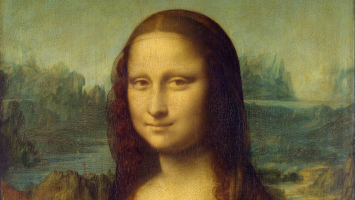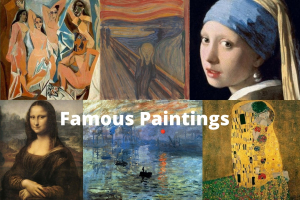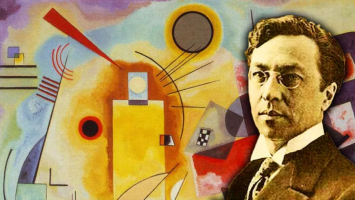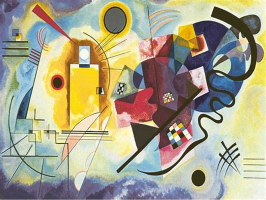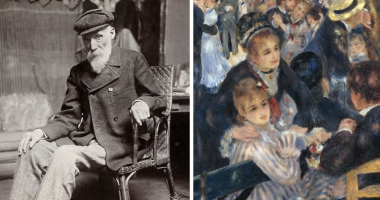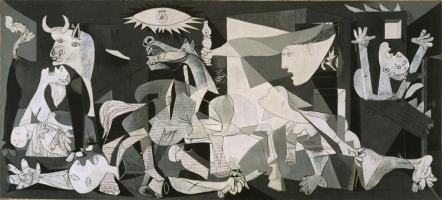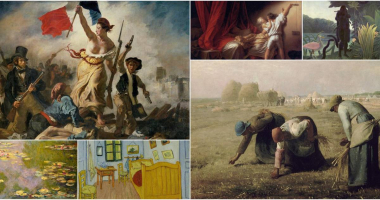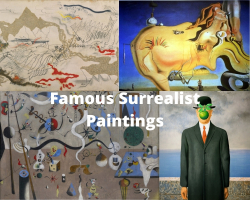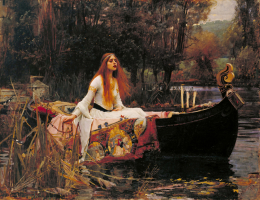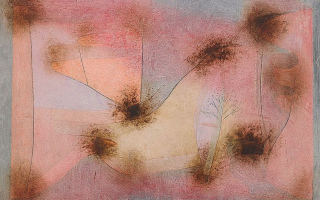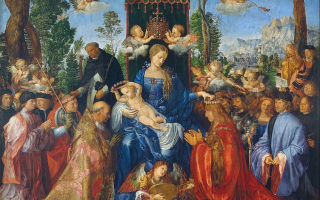Top 12 Famous Paintings Every Students Should Know
Famous paintings have always captured the imagination and spirit of humanity. They offer a glimpse into the minds of history's greatest artists and the times ... read more...they lived in. This article explores the top 12 famous paintings every student should know, delving into their history, meaning, and lasting impact.
-
The Mona Lisa, a mesmerizing oil painting by Leonardo da Vinci and housed at the Louvre since 1804, stands as a paragon of artistry and mystery. Each year, millions crowd the Louvre, eager for a glimpse of da Vinci's most famous work. The painting's allure lies not just in its artistic brilliance but also in its curious iconography and storied history. This together prompts the question: Why does the Mona Lisa maintain its fame today?
The painting depicts Lisa Gherardini, a noblewoman of Florence. She is seated against a dreamlike, remote landscape. This backdrop is painted in sfumato, a technique that produces a haze-like effect. It adds to the portrait's mysterious allure. Gherardini's subtle smile and gentle gaze, which appears to follow viewers across the room, have been subjects of intense scrutiny and admiration for centuries.
The Mona Lisa is more than a portrait. It's a window into da Vinci's genius. The painting is painted with oil on a wood panel. The artwork features Lisa Gherardini, wife of Francesco Giocondo, set against an imaginative landscape. This backdrop, rendered in sfumato, adds depth and mystery to the piece. Her enigmatic smile and the ambiguous nature of her gaze, which seems to follow viewers around the room, have sparked endless debates and fascination.
Gherardini's smile has been a subject of intrigue for centuries. It's this smile, along with her seemingly alive gaze, that makes the Mona Lisa an active participant when viewed, rather than a passive subject. Interestingly, German researchers assert that the 'Mona Lisa effect'—where the eyes seem to follow the viewer—is not present in this painting. They claim she's looking 15 degrees to your right, adding yet another layer to the painting's mystery.
The Mona Lisa's fame is not solely due to its artistic merit. Its history is laced with drama. After Leonardo's death in 1519, the painting remained in France, transitioning from royal possession to its current home in the Louvre. However, it wasn't until a 1911 heist by Louvre employee Vincenzo Peruggia that the Mona Lisa's fame skyrocketed. Peruggia's attempt to return the painting to Italy brought it global attention. After a brief exhibit in the Uffizi Gallery and Peruggia's subsequent arrest, the Mona Lisa returned to the Louvre, more famous than ever.
Over the years, the Mona Lisa has endured acts of vandalism — from thrown rocks to red paint. Each incident contributes to its legend. Today, it rests behind bulletproof glass, a testament to its value and the desire to preserve it for future generations. For its 500th anniversary, the Louvre used virtual reality to bring visitors closer, allowing an immersive experience behind the glass.
Key Takeaways:
- Title: Mona Lisa
- Artist: Leonardo da Vinci
- Year: 1503-1506
- Medium: Oil on wood panel
- Size: 30 in × 21 in (77 cm × 53 cm)
- Location: Louvre (Paris, France)
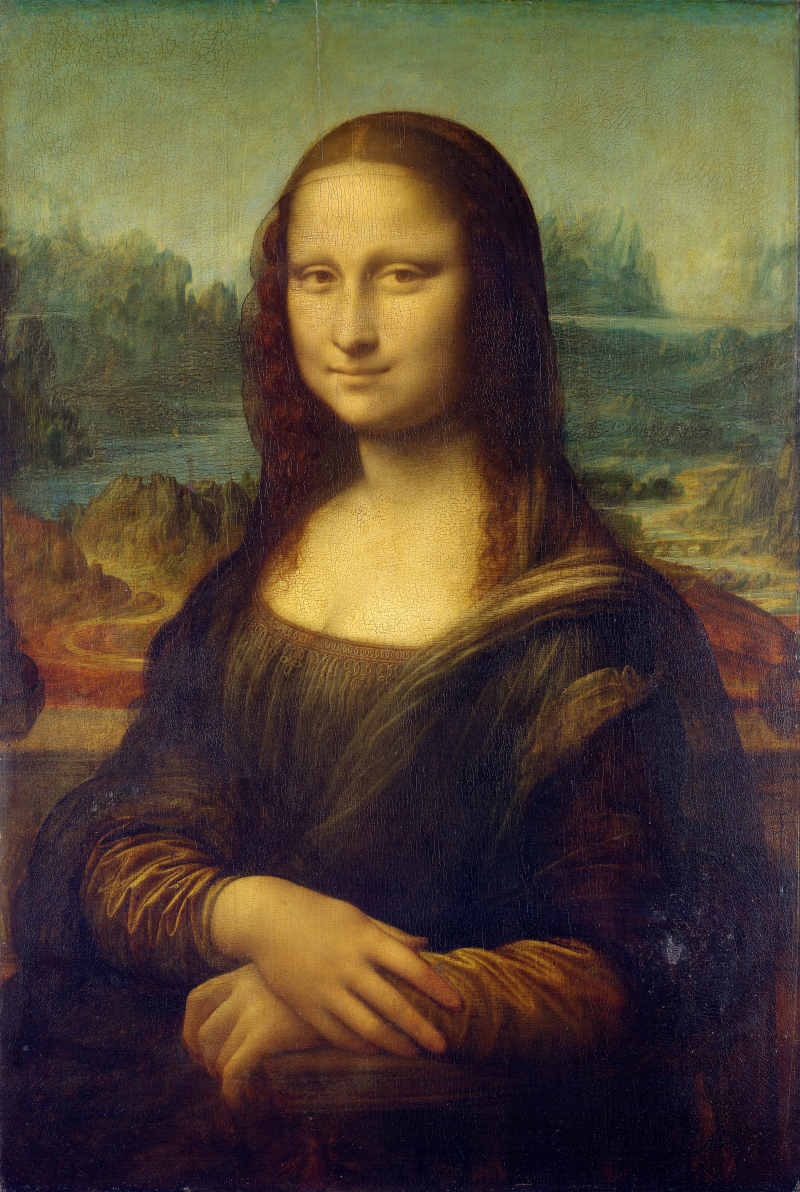
Screenshot of https://en.wikipedia.org/wiki/Mona_Lisa Video by Great Art Explained -
Edvard Munch's "The Scream" is a profound artwork that captures a personal crisis. This painting was created in versions from 1893 to 1910. It shows a figure in the grip of an overwhelming emotion.
Munch's inspiration came from a panic attack he experienced while walking in Kristiania (now Oslo). The sky turned red like blood, and he felt a great scream through nature. He said it was almost like he could hear the scream. This intense feeling is what we see in "The Scream."
The central figure is on a bridge with a background of swirling, fiery colors. This setting is where Munch felt nature's scream. The figure's face is twisted in fear, and its hands are on its cheeks. It looks like the world around it is whirling and twisting. Munch used wavy lines to show this movement. It makes the figure look trapped and alone in its fear.
Munch's use of lines and color is particularly striking. The undulating lines create a sense of movement and chaos. The use of red and orange hues not only represents the blood-red clouds but also adds to the overall feeling of panic. The contrast between the straight path of the indifferent figures and the tortured curves surrounding the central figure highlights the disconnection between the subject and the world.
Interestingly, Munch might have based the figure on an Inca mummy he saw in Paris. This adds a sense of timeless fear to the painting. The figure's friends are in the background, walking away, untouched by this fear. This shows how personal and deep the scream is. It's not about the outside world but what's happening inside the person.
"The Scream" is not just famous for its look. Its story is also gripping. It has been stolen twice and always returned. It's so valued that one version sold for $120 million in 2012. This shows how much people are drawn to this image of fear and anxiety. It's become a symbol of how modern life feels for many.
Key Takeaways:
- Title: The Scream
- Artist: Edvard Munch
- Year: 1893, 1895, 1910 (various versions)
- Medium: Oil, tempera, pastel, and crayon on cardboard
- Size: Around 91 cm × 73 cm (36 in × 28 3/4 in)
- Location: National Gallery, Oslo; Munch Museum, Oslo

Screenshot of https://en.wikipedia.org/wiki/The_Scream Video by Great Art Explained -
Leonardo da Vinci's "The Last Supper" is a breathtaking mural that captures a critical moment in Christian history. Commissioned by Ludovico Sforza, the Duke of Milan, for the Convent of Santa Maria delle Grazie, this painting measures an impressive 460 x 880 cm. It adorns the end wall of the dining room, a traditional spot for such religious themes. Yet da Vinci's approach was anything but conventional.
The mural depicts the exact moment when Jesus announces that one of his apostles will betray him. This revelation triggers a range of emotions among the apostles, from shock to denial to anger. Da Vinci captures these reactions with unparalleled realism. That creates a dynamic scene filled with tension.
The composition is symbolic and carefully planned. Jesus sits at the center, his right cheek marking the vanishing point of the perspective lines. This technique draws the viewer's eyes towards him. It emphasizes his central role. His hands trace the golden ratio, symbolizing divine perfection. To his right, Judas, the betrayer, is depicted reaching for bread at the same moment as Jesus.
All apostles are arranged on the same side of the table and grouped in threes. They reference the Holy Trinity. Each group reacts differently, showcasing a range of human emotions from disbelief to grief. Da Vinci's ability to portray complex emotions so contributed significantly to the painting's lasting impact.
Art historian Giorgio Vasari praised da Vinci for capturing the apostles' varied psychological responses. Each apostle's facial expressions and body language tell a unique story. From Peter's anger to John's despair and Judas's shock, all are underlined by the shadow that marks him out from the others.
Da Vinci's technique was as innovative as his composition. He painted "The Last Supper" using a secco (dry) technique, deviating from the traditional fresco method. This allowed him more time to refine details and employ his signature sfumato and chiaroscuro techniques. However, this experimental method also meant the painting began deteriorating soon after its completion in 1498. Despite this, the mural remains one of da Vinci's most revered works. Even if what we see today is far from the original.
Key Takeaways:
- Title: The Last Supper
- Artist: Leonardo da Vinci
- Year: Completed in 1498
- Medium: Secco (dry) on plaster
- Size: 460 cm × 880 cm (181 in × 346 in)
- Location: Convent of Santa Maria delle Grazie, Milan
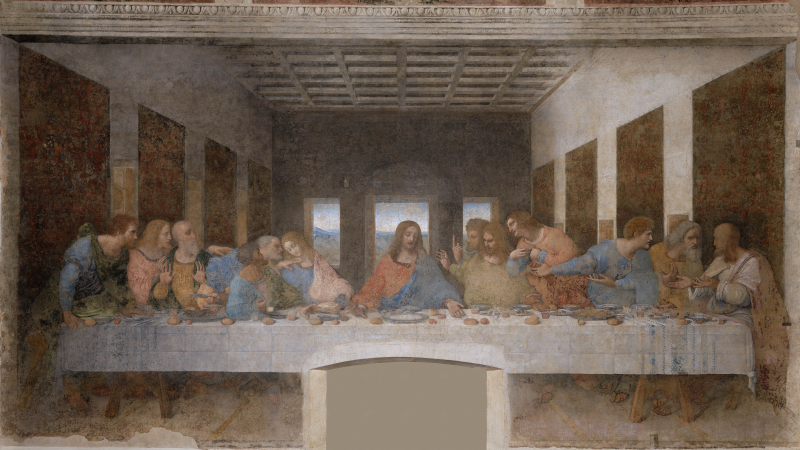
Screenshot of https://en.wikipedia.org/wiki/The_Last_Supper_%28Leonardo%29 Video by The Seasoned Expats -
Pablo Picasso's "Guernica" is a profound statement on the atrocities of war. It was created in response to the 1937 bombing of Guernica, a Basque Country town in Spain. The painting is an artistic outcry against the horrors inflicted by the Spanish army and its allies. This 3.49 x 7.76-meter oil-on-canvas, housed in the Museo Reina Sofía in Madrid, is one of Picasso's most politically charged works.
"Guernica" is a raw portrayal of pain and chaos. Picasso, who usually kept art separate from politics, was deeply moved by the attack. So he depicted the agony of the bombing's victims. The painting's monochromatic scheme of grey, white, and black adds to its somber mood. It conveys the bleakness of war and the despair of those caught in its wake.
The prominent figures in "Guernica" are women. Each represents different aspects of pain and suffering. A woman with a dead child wails in agony, symbolizing the ultimate loss. Another tries to flee, while one more stands shocked with her arms raised. The use of female figures as central characters underscores the universal impact of war. That affects the most vulnerable and innocent.
Picasso was known for his symbolic imagery, and "Guernica" is no exception. The bull and the horse, central figures in the painting, have sparked much debate over their meanings. Picasso himself refrained from providing clear interpretations. It emphasizes that the viewer's understanding is as valid as any. This open-ended symbolism invites continuous discussion and interpretation. That makes "Guernica" a breathing piece of history and emotion.
Beyond its artistic value, "Guernica" has played a significant role in political discourse. Its antifascist message made it a target of criticism by supporters of fascism. Yet it also became an emblem for peace and anti-war movements. Notably, a tapestry reproduction of "Guernica" at the United Nations was famously covered during a speech advocating for the Iraq War.
"Guernica" was Picasso's way of responding to the tragedy, a visual journalist capturing the moment's raw emotion and transforming it into a timeless call for peace. His choice to work in greyscale was deliberate. It strips the scene of the vibrancy of life and underscores the darkness of war.
Key Takeaways:
- Title: Guernica
- Artist: Pablo Picasso
- Year: 1937
- Medium: Oil on canvas
- Size: 3.49 m x 7.76 m (11 ft 5 in x 25 ft 6 in)
- Location: Museo Reina Sofía, Madrid, Spain
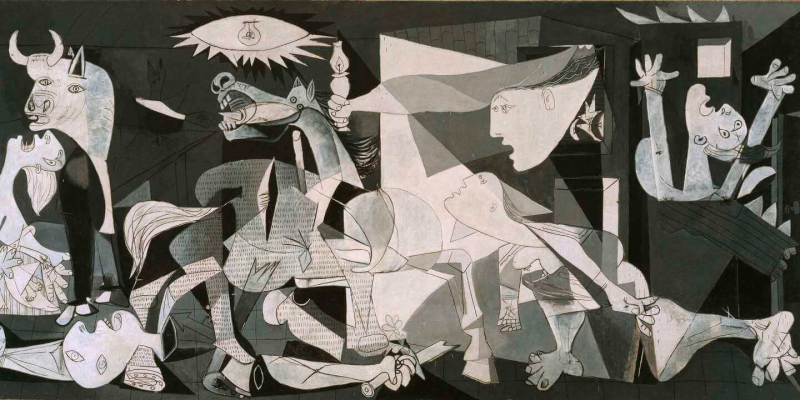
Screenshot of https://en.wikipedia.org/wiki/Guernica_%28Picasso%29 Video by BBC News -
Salvador Dalí's "The Persistence of Memory" is a captivating painting that explores the fluidity of time. This 1931 masterpiece is often called "Melting Clocks." It resides in the Museum of Modern Art in New York City and stands as one of the most celebrated works of Surrealism.
At first glance, the melting pocket watches catch your eye. They drape over the landscape and strange creature-like pieces of soft cheese. Dalí's concept of "softness" and "hardness" is at play here, challenging the rigidity of time. While some think these melting clocks reflect Einstein's theory of relativity and the fluid nature of time. Dalí himself attributed the inspiration to a surreal perception of a Camembert cheese melting in the sun. This typical Dalí twist adds a layer of whimsy and unpredictability to the interpretation of the piece.
In the middle of the composition, a strange creature appears in an abstract form that Dalí often used as a self-portrait. This "monster" has a closed eye with lashes. It might be dreaming. It's a fading, dream-like figure, much like the ones we struggle to remember upon waking. The creature seems to be a nod to Hieronymus Bosch's work. It suggests a deep dive into the human psyche and dreams.
The painting is not just about the surreal landscape but also about decay and the passage of time. The ants swarming over the orange clock symbolize this decay, a common theme in Dalí's work. In contrast, a solitary fly casts a human-like shadow. Perhaps it alludes to the presence and impact of humans in the world of dreams.
Dalí's use of precise painting techniques to portray dream-like, irrational scenes invites viewers into a world where time and reality are fluid. The rocky landscape is inspired by Catalonia's Cap de Creus. It adds a touch of the familiar to the otherwise surreal scene. The foreboding shadow in the foreground suggests an unseen presence or future. That adds to the painting's mysterious aura.
Dalí revisited this theme in "The Disintegration of the Persistence of Memory" (1954), where he shows the original work fragmenting. It reveals more layers and complexities. This, along with his various lithographs and sculptures on the theme, shows his continued fascination with the fluidity of time.
Key Takeaways:
- Title: The Persistence of Memory
- Artist: Salvador Dalí
- Year: 1931
- Medium: Oil on canvas
- Size: 24 cm x 33 cm (9.5 in x 13 in)
- Location: Museum of Modern Art, New York City
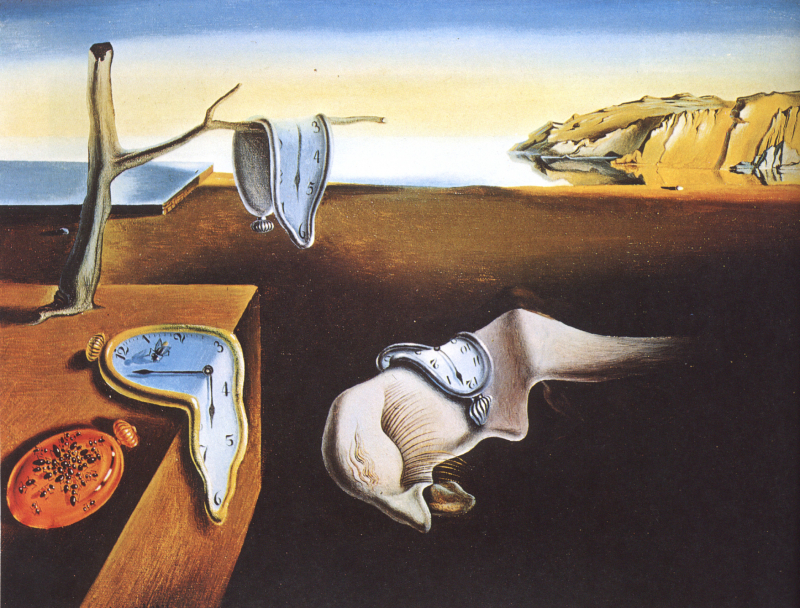
Screenshot of https://en.wikipedia.org/wiki/The_Persistence_of_Memory Video by The Canvas -
Johannes Vermeer's "Girl with a Pearl Earring" is a captivating piece that has intrigued the art world for centuries. Painted around 1665, this work is often referred to as the 'Mona Lisa of the North.' It's about the subject's enigmatic gaze and the mystery surrounding her identity.
The painting resides in the Mauritshuis Royal Picture Gallery in The Hague, Netherlands, and is a classic example of a 'tronie.' It is a type of 17th-century Dutch painting focusing on an exaggerated facial expression or an exotic costume rather than a specific individual.
A 'tronie' wasn't meant to be a portrait of a known person but an exploration of character or expression. This explains why the identity of the girl with the captivating pearl earring remains unknown. Some speculate she might be Vermeer's daughter or maid. While others suggest she's a figment of the artist's imagination.
Her simple yet exotic dress, featuring a turban and the famed pearl earring, adds to the painting's allure. It's a study in contrast – her plain attire against the luxurious earring. Experts like Vincent Icke have suggested that the light reflection in the painting doesn't match that of a real pearl. That suggests it might be a crafted glass 'pearl' common in the 17th century.
The painting's background is now a deep, muted black. It was once a glossy green, as revealed by modern restorations. Over time, the glaze mixture used by Vermeer has darkened. This change, however, doesn't detract from the overall impact of the piece. The girl's turban, a rich blue, was created using lapis lazuli, a precious stone. That reflects Vermeer's commitment to his craft despite financial hardships. His use of this expensive pigment shows the importance he placed on color and texture in his work.
"Girl with a Pearl Earring" is renowned not just for its aesthetic value but also for its emotional depth. The girl's direct gaze creates an intimate connection with the viewer. She seems close and accessible yet profoundly mysterious. Unlike the distant, serene Mona Lisa, this girl seems to be in a moment of engagement, as if she's about to speak.
Key Takeaways:
- Title: Girl with a Pearl Earring
- Artist: Johannes Vermeer
- Year: Circa 1665
- Medium: Oil on canvas
- Size: 44.5 cm x 39 cm (17.5 in x 15 in)
- Location: Mauritshuis, The Hague, Netherlands
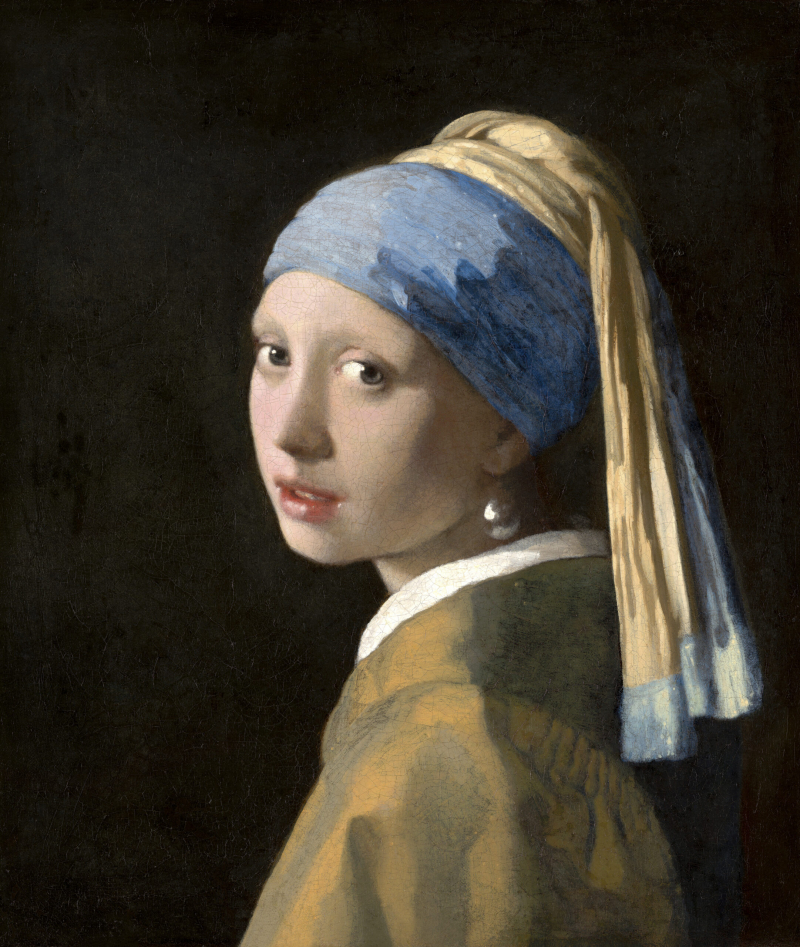
Screenshot of https://en.wikipedia.org/wiki/Girl_with_a_Pearl_Earring Video by TED-Ed -
Sandro Botticelli's "The Birth of Venus" is an iconic painting from the Italian Renaissance. The painting depicts the mythical arrival of Venus, the goddess of love and beauty, on the island of Cyprus. Created in the mid-1480s, this artwork is not just a visual treat but a narrative of divine grace and beauty. Its home is the Uffizi Gallery in Florence, Italy, where it continues to awe visitors with its ethereal charm.
The painting captures Venus in the center, standing on a shell. It symbolizes her birth from the sea. Her pose, the classical contrapposto, is a study of balance and movement. As she seems to float on the gentle swirl of the ocean. Her delicate foot touches the shell's edge, signaling her imminent arrival to the shore. Venus's long, golden hair, blown by the wind, covers her modesty along with her hands. All of them create an aura of innocence and purity.
The figures to her right, Zephyr, the wind god, and his wife, the nymph Chloris, embody the force that brings Venus to the shore. Their close embrace and the movement in their draperies convey the strength and gentleness of the wind. Zephyr's strong facial expression and backward-stretched arm emphasize his determination and pivotal role in Venus's journey.
To the left, a Hore, representing spring, waits to receive Venus with a floral robe. Her attire, adorned with spring flowers and a rosary, contrasts with the nudity of Venus and Zephyr. That highlights the transition from divine to earthly existence. The presence of spring flowers around her and in the robe she offers to Venus symbolizes the fertility on earth with the goddess.
The setting of the painting is also significant. The orange grove in the background points to the patronage of the Medici family. It is known for its support of the arts and its orange groves. This personal touch connects the mythical narrative to the real world of the patrons. It adds another layer to the painting's interpretation.
Botticelli's use of soft lines and his ability to convey emotion through the poses of the figures make "The Birth of Venus" a masterpiece of storytelling. It's not just a depiction of a mythological event but a celebration of beauty, love, and the transformative power of the arts.
Key Takeaways:
- Title: The Birth of Venus
- Artist: Sandro Botticelli
- Year: Mid-1480s
- Medium: Tempera on canvas
- Size: 172.5 cm × 278.9 cm (67.9 in × 109.6 in)
- Location: Uffizi Gallery, Florence, Italy
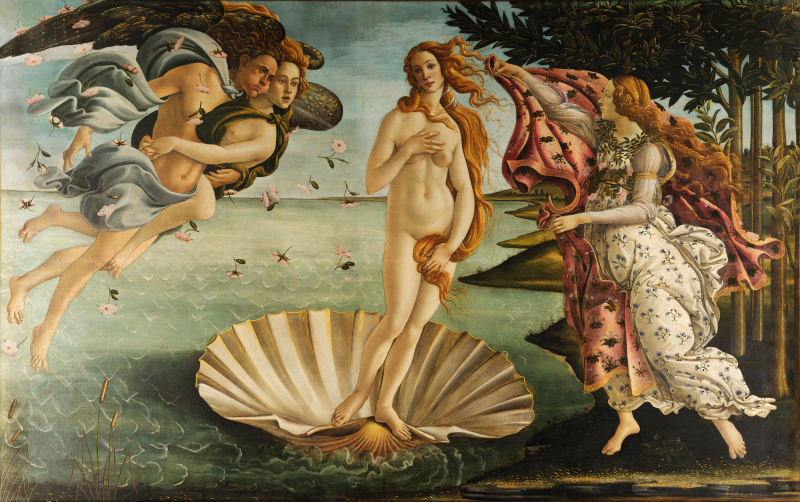
Screenshot of https://en.wikipedia.org/wiki/The_Birth_of_Venus Video by Great Art Explained -
Claude Monet's "Water Lilies" is a profound exploration of the essence of nature. This extensive collection, comprising approximately 250 artworks, is a testament to the Impressionist movement's heart and soul. More than just depicting water lilies, these pieces delve into reflections, the interplay of light, and nature's fleeting beauty.
In Giverny, Monet's landscape became his canvas. He meticulously crafted his garden, transforming it into a masterpiece that inspired his later works. This garden, a blend of nature and artistry, was an extension of his artistic vision. Here, Monet cultivated beauty and inspiration. It creates a space where nature and art coexist harmoniously.
Over time, after the death of his wife, Alice, in 1911, Monet's approach to these paintings underwent a significant transformation. The canvases expanded in size. Some reach over six feet, creating an immersive experience that draws viewers into the tranquil world of his garden. This shift allowed him to focus on color and form. He uses vibrant color spots to suggest the flowers floating on the pond's surface. This innovative approach inspires contemporaries like Paul Cézanne and Henri Matisse with his exploration of color and light.
Despite achieving widespread acclaim, Monet faced personal challenges that influenced his work. Diagnosed with cataracts in his eighties, his perception of color changed. That leads to a more vivid palette in his later works. Yet, even as his vision faltered, Monet persisted in painting, his style evolving towards abstraction. This move wasn't solely due to his impaired vision but also a deliberate artistic choice.
The culmination of Monet's "Water Lilies" series is displayed in Paris's Orangerie. It is a collection of large-scale paintings designed for a specially adapted space. This immersive environment represents Monet's final artistic offering, a sanctuary where viewers can immerse themselves in Giverny's beauty and tranquility. Even in his last years, Monet continued to innovate, pushing the boundaries of paint and canvas.
Key Takeaways:
- Title: Water Lilies (Series)
- Artist: Claude Monet
- Year: 1896 - 1926
- Medium: Oil on canvas
- Size: Varies per piece
- Location: Various, including the Musée de l'Orangerie, Paris
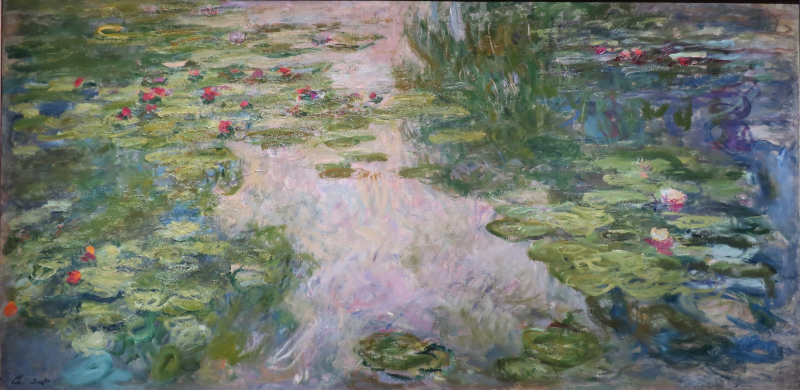
Screenshot of https://vi.m.wikipedia.org/wiki/T%E1%BA%ADp_tin:Claude_Monet_-_Water_Lilies,_1917-1919.JPG Video by Great Art Explained -
Diego Velázquez's "Las Meninas" stands as a masterpiece of Western art that continues to baffle. It was painted in 1656 during Spain's prosperous Habsburg era. This painting, residing in the Museo Nacional del Prado, is a complex narrative that captures a fleeting moment in the royal court. Velázquez, a prominent artist of the Spanish Golden Age, was known for his realistic portrayal of life. It often paints scenes of daily activities and people of various standings.
"Las Meninas" is unique for its intricate composition and the artist's play with perspective. Velázquez places himself within the painting, looking out at the viewer while painting a large canvas. This inclusion raises questions about the nature of reality and artistry. The painting captures the Infanta Margaret Theresa. It is surrounded by her ladies-in-waiting, court dwarfs, a dog, and other figures of the royal household. Intriguingly, the mirror in the background reflects the images of King Philip IV and Queen Mariana. That suggests they are the subjects of Velázquez's canvas within the painting.
What sets "Las Meninas" apart is its ambiguity and multiple interpretations. Scholars have debated whether the mirror reflects the king and queen's image or the painting Velázquez is working on. It leads to an endless array of theories and analyses. This uncertainty and complexity have led some scholars, like Jonathan Brown, to describe their study of the painting as a kind of scholarly fatigue.
The painting's title, "Las Meninas," meaning "The Ladies-in-waiting," raises questions about its focus. Some speculate that Velázquez aimed to elevate the status of the court's lesser-known figures. While others believe the title adds to the painting's grandeur and mystery. Despite its royal subjects, "Las Meninas" is far from a typical portrait. It captures a moment filled with action and subtle narratives.
Velázquez's style, marked by his expressive brushstrokes and use of light and dark, adds drama and depth to the painting. His ability to capture the textures of fabrics, the softness of skin, and the intricate details of his subjects' expressions makes "Las Meninas" a stunning visual experience. The painting's influence extends beyond its time. It inspired artists like Pablo Picasso and Salvador Dalí, who created their own interpretations.
Key Takeaways:
- Title: Las Meninas
- Artist: Diego Velázquez
- Year: 1656
- Medium: Oil on canvas
- Size: 318 cm × 276 cm (125.2 in × 108.7 in)
- Location: Museo Nacional del Prado, Madrid
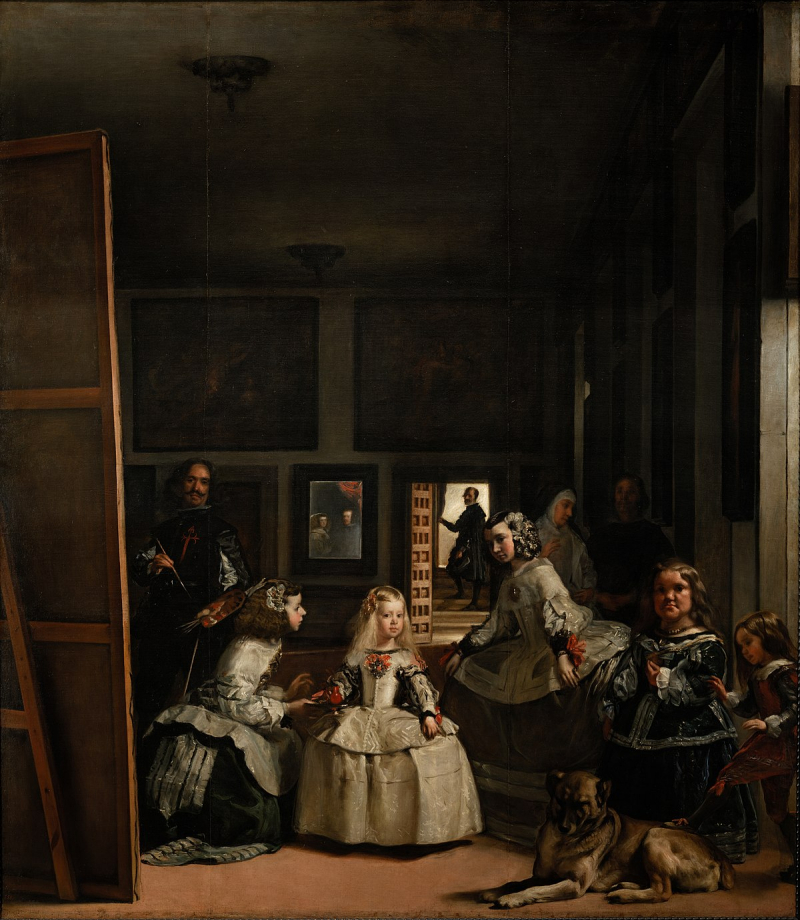
Screenshot of https://en.wikipedia.org/wiki/Las_Meninas Video by Nerdwriter1 -
"American Gothic," painted by Grant Wood in 1930, is an iconic portrayal of the American Midwest. Now housed in the Art Institute of Chicago, this painting has become one of the most recognizable images in 20th-century American art. It depicts a farmer holding a pitchfork and standing beside a woman, presumed to be his daughter, in front of a white, wooden house adorned with a Gothic window.
The stern expressions of the figures reflect the traditional and conservative values often associated with the Midwestern United States. The man's pitchfork and overalls combine with the woman's colonial print apron. They reinforce their rural, hardworking lifestyle. This painting emerged during the Great Depression, a period when American endurance and resilience were heavily tested. In this context, "American Gothic" served as a reminder of the nation's unwavering strength and determination.
Wood's inspiration for "American Gothic" came from a real house in Eldon, Iowa, which featured a distinctive Gothic window. He envisioned the kind of people he believed would live in such a house and painted the figures accordingly. Interestingly, the models for the painting were Wood's sister and his dentist, neither of whom was a farmer. But their stern expressions and reserved demeanor perfectly captured the feeling Wood wanted to convey.
The painting's style is characterized by its clean lines and clarity of form. It reflects Wood's desire to depict a simple, unadorned reality. Despite its straightforward appearance, "American Gothic" is rich in symbolism and interpretation. Some view it as a celebration of traditional American values. While others see it as a critique of the rigid and repressive societal norms of the time.
"American Gothic" has become a cultural icon, often parodied and referenced in various forms of media. Its enduring appeal lies in its ability to evoke discussion and reflection on American culture, values, and identity.
Key Takeaways:
- Title: American Gothic
- Artist: Grant Wood
- Year: 1930
- Medium: Oil on beaverboard
- Size: 78 cm × 65.3 cm (30 3⁄4 in × 25 3⁄4 in)
- Location: Art Institute of Chicago, Chicago
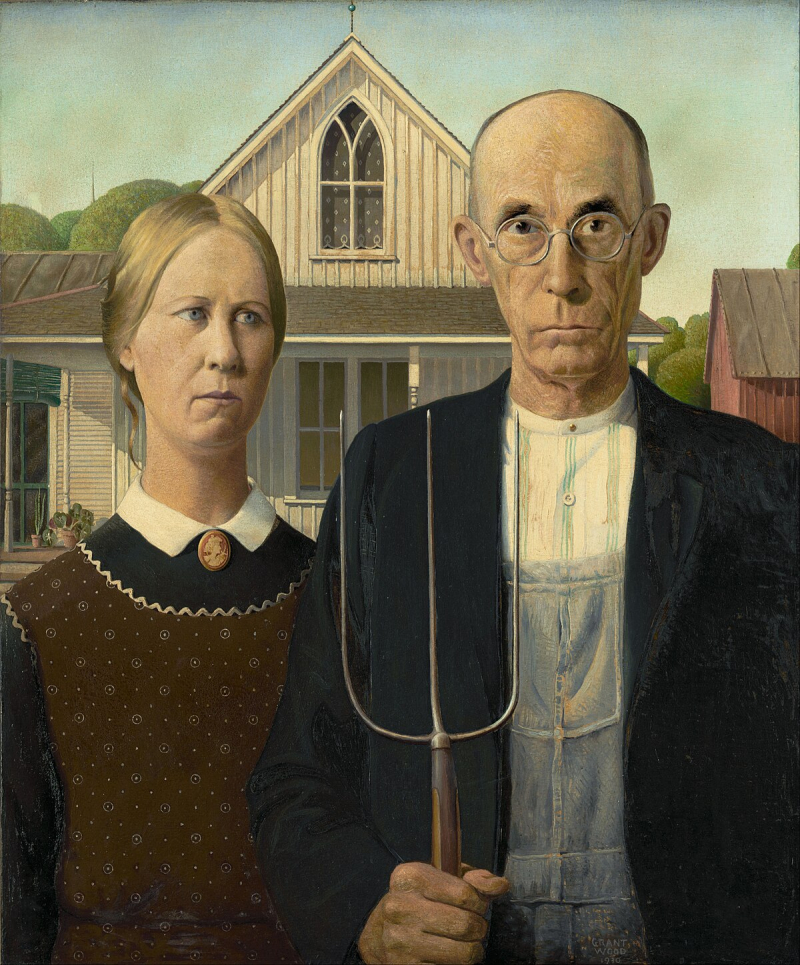
Screenshot of https://en.wikipedia.org/wiki/American_Gothic Video by The Art Institute of Chicago -
Vincent van Gogh's "The Starry Night" is an iconic piece of art that captures the beauty and turbulence of the night sky. Painted in 1889 while van Gogh was in an asylum in Saint-Rémy, France, this masterpiece is a vivid reflection of the artist's emotions. Today, "The Starry Night" is housed in the Museum of Modern Art in New York City. It continues to captivate viewers with its swirling skies and vibrant colors.
At first glance, "The Starry Night" is a study of contrasts. The tranquil village lies in stark contrast to the tumultuous sky swirling above. This painting is a portrayal of the inner turmoil and hope van Gogh experienced. The cypress tree that towers over the village represents death and eternity, a common theme in van Gogh's works. While the stars and moon in the night sky symbolize hope and guidance.
The swirling patterns of the sky draw the eye, creating a sense of movement and energy. Van Gogh's use of thick, expressive brushstrokes and bright, unnatural colors make the sky come alive. The blues and yellows swirl together. They create a dynamic and almost otherworldly scene. This use of color and form was revolutionary at the time and showcased van Gogh's unique artistic vision.
Van Gogh's technique in "The Starry Night" was innovative. He applied paint directly from the tube onto the canvas. It creates thick layers of color and texture. This technique, known as impasto, gives the painting a three-dimensional quality. It also makes the viewer feel as if they are looking at a living, breathing scene. The swirling patterns in the sky are a departure from traditional techniques. They show van Gogh's move towards a more expressive and emotional style of painting.
Despite its fame, "The Starry Night" was not well-received during van Gogh's lifetime. He considered it a failure, yet today it is one of his most celebrated works. It symbolizes the artist's struggle with mental illness and his relentless pursuit of beauty and meaning in the world around him.
Key Takeaways:
- Title: The Starry Night
- Artist: Vincent van Gogh
- Year: 1889
- Medium: Oil on canvas
- Size: 73.7 cm × 92.1 cm (29 in × 36 1⁄4 in)
- Location: Museum of Modern Art, New York City
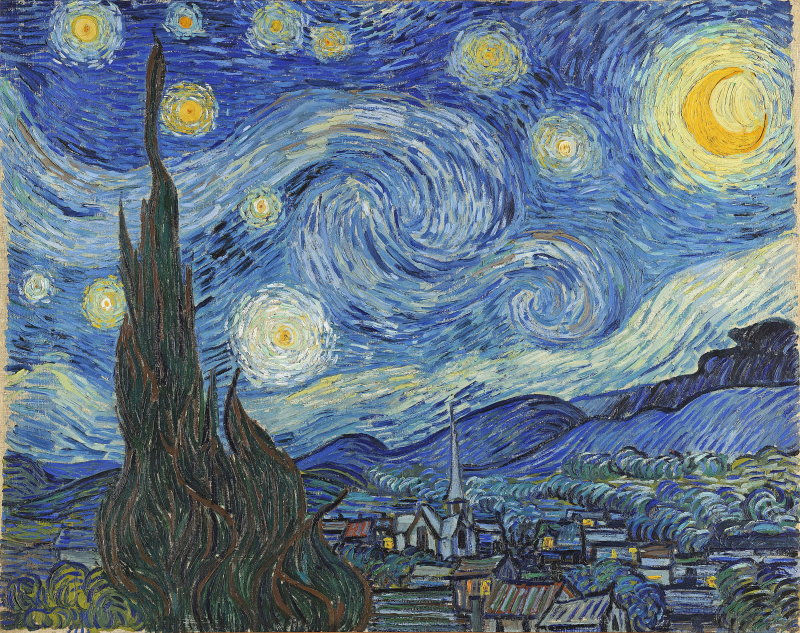
Screenshot of https://en.wikipedia.org/wiki/The_Starry_Night Video by Great Art Explained -
Michelangelo's "The Creation of Adam" is a complex narrative that melds divine interaction with profound human intellect. It is much like his other works that explore deep religious and existential themes. Painted as part of the Sistine Chapel's ceiling between 1508 and 1512, this fresco captures the moment when life is imparted to the first man, Adam, by God.
At the core of the painting is the nearly touching hands of God and Adam. This gap, although minimal, is profoundly significant. It represents the moment just before the spark of life is given – a suspenseful pause full of potential. This iconic gesture has been embedded deeply in the cultural consciousness. It symbolizes creation, inspiration, and the divine spark within humanity.
Michelangelo, known for his anatomical precision, is believed to have embedded a representation of the human brain within the shapes surrounding God. This might suggest that God is not just imparting life but also the gift of human intellect. This aligns with Renaissance humanism. Where there was a deep belief in the potential and dignity of the individual and a focus on the capability of the human mind.
In "The Creation of Adam," the figures are reflections of human emotion and condition. Adam's posture and expression are passive, almost as if he's waiting for life and purpose. This contrasts with God's dynamic movement, surrounded by figures, reaching out to Adam. This could symbolize the human condition of waiting for divine inspiration or a moment of awakening.
The female figure under God's arm is thought to be Eve, waiting to be created, or perhaps the Virgin Mary. They symbolize the future of humanity. The presence of these figures next to God as he creates Adam suggests the interconnectedness of creation, life, and the divine plan. The painting also features children, possibly representing future generations. It emphasizes the ongoing nature of creation and life.
"The Creation of Adam" is a fusion of art, theology, and philosophy. Michelangelo doesn't just paint a scene; he invites contemplation of larger questions. What is the nature of humanity? What is our relationship with the divine? How do intellect and creativity define us? These questions remain as relevant today as they were during the Renaissance.
Key Takeaways:
- Title: The Creation of Adam
- Artist: Michelangelo Buonarroti
- Year: 1508-1512
- Medium: Fresco
- Size: 280 cm × 570 cm (9 ft 2 in × 18 ft 8 in)
- Location: Sistine Chapel, Vatican City
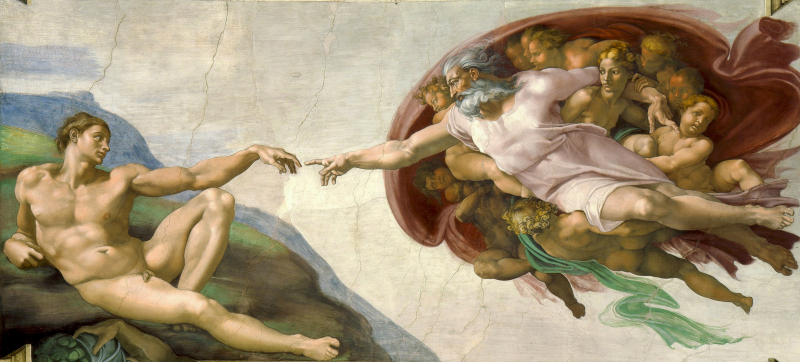
Screenshot of https://en.wikipedia.org/wiki/The_Creation_of_Adam Video by TheHistoryOfArt














